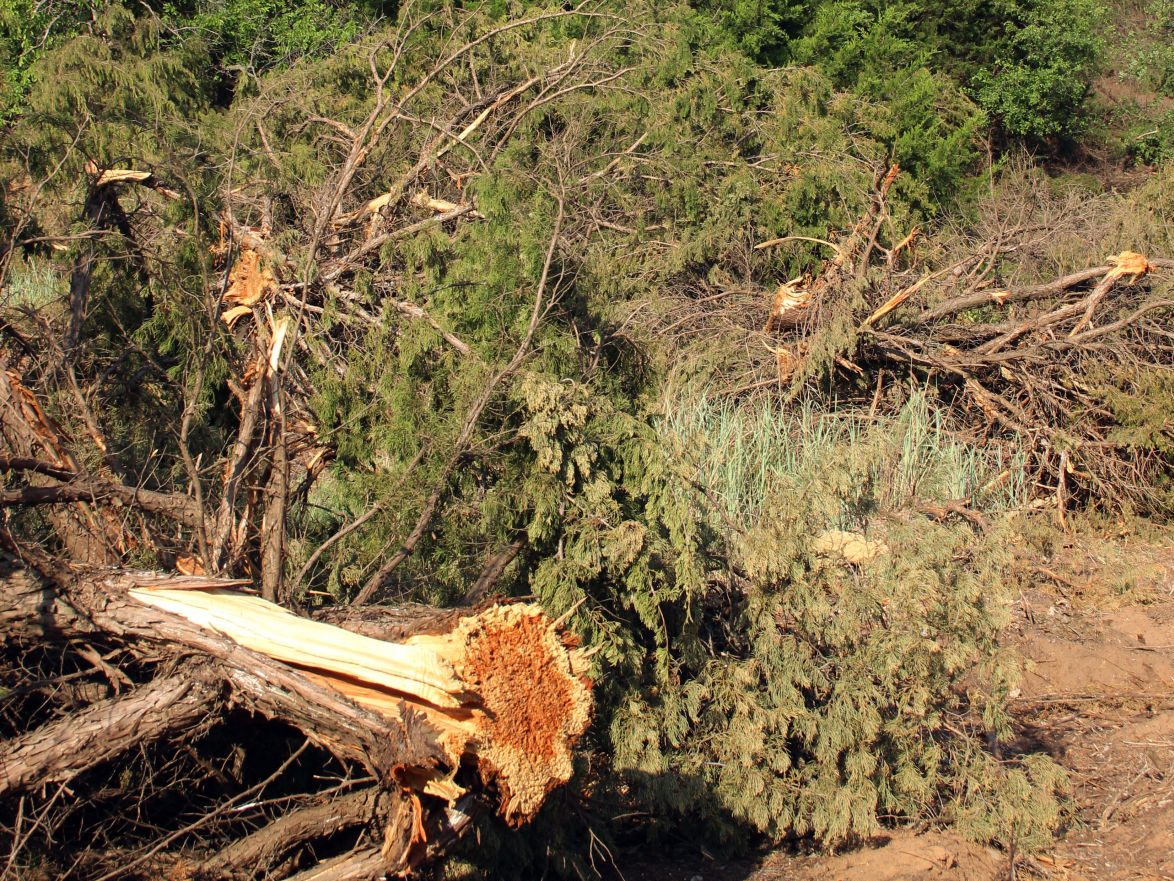Decades ago, before the white man forced the Native Americans off the Great Plains, the buffalo were plentiful and cedar trees were sparse. In those days Native Americans set numerous fires, which engulfed miles of grasslands and trees.
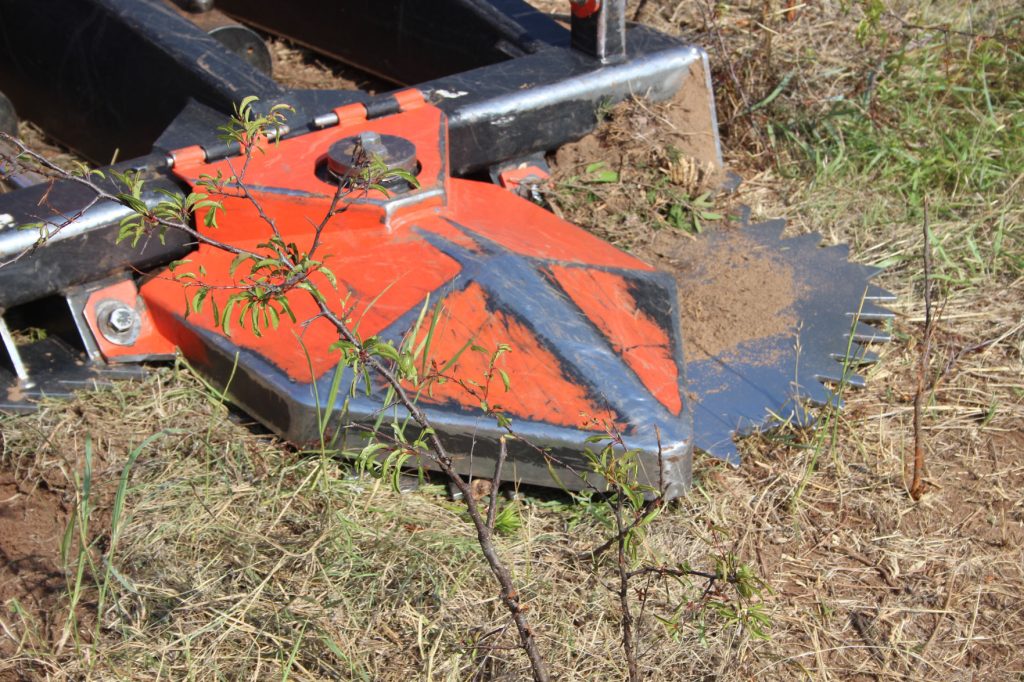
Perhaps Native Americans should be given credit for setting the first prescribed burns, as these fires encouraged wildlife for hunting and cleared land for their villages. From their regular use of fire, three invasive species of cedar trees—eastern redcedar, blueberry juniper and redberry juniper—were kept from overpopulating rangelands. However, nowadays these trees have all but taken over much of the grasslands of the Midwest, southern and western plains. Action needs to be taken to keep pastures from being overrun.
Morgan Russell, Texas A&M Agrilife Extension range specialist and faculty member for the ecosystem science and management department at Texas A&M University, is quite familiar with the problems and benefits posed by cedar trees. She teaches range management and her specialty is brush control, particularly prescribed burning and herbicides.
“I help producers get rangelands back into a productive and sustainable state,” she said. “I guess you could say restoring rangelands is my calling.”
In Texas, Russell mainly fights two worthy opponents, blueberry juniper and redberry juniper. Although cedar is not part of their names, they are in the same genus as eastern redcedar, a main aggressor to Oklahoma, Kansas and Nebraska. Russell says blueberry juniper is comparable to eastern redcedar. Neither is a resprouting species, which makes them much easier to control than redberry juniper, which is a prolific resprouter. Russell says both redberry and blueberry juniper species are native to Texas, however, the Lone Star state is still at the mercy of these trees taking over even more areas.
“The hill country, our native prairie grasslands and the western side of the state are in the most danger,” Russell added. “They’re monoculturists, or opportunistic species, and if given the opportunity they will take over an area in very little time.”
The same can be said for the junipers’ cousin, the eastern redcedar. Steve Hallgren, associate professor in forest and wildlife ecology in the department of natural resource ecology and management at Oklahoma State University, is all too familiar with the eastern redcedar and its tendencies. He says the eastern redcedar is native to Oklahoma and the surrounding areas; however it has become an invasive species and just like the other junipers, it seems to take over an area overnight.
Wildlife warfare
Although they don’t have the best reputation, cedar trees aren’t entirely bad. Landowners are encouraged to keep a small population of cedar trees rather than annihilate them entirely from a pasture. They promote ecological diversity when in controlled populations and provide ample shade for wildlife and livestock. Similarly they are excellent windbreaks and were commonly planted during the “Dirty-Thirties” to keep the ground from blowing as much.
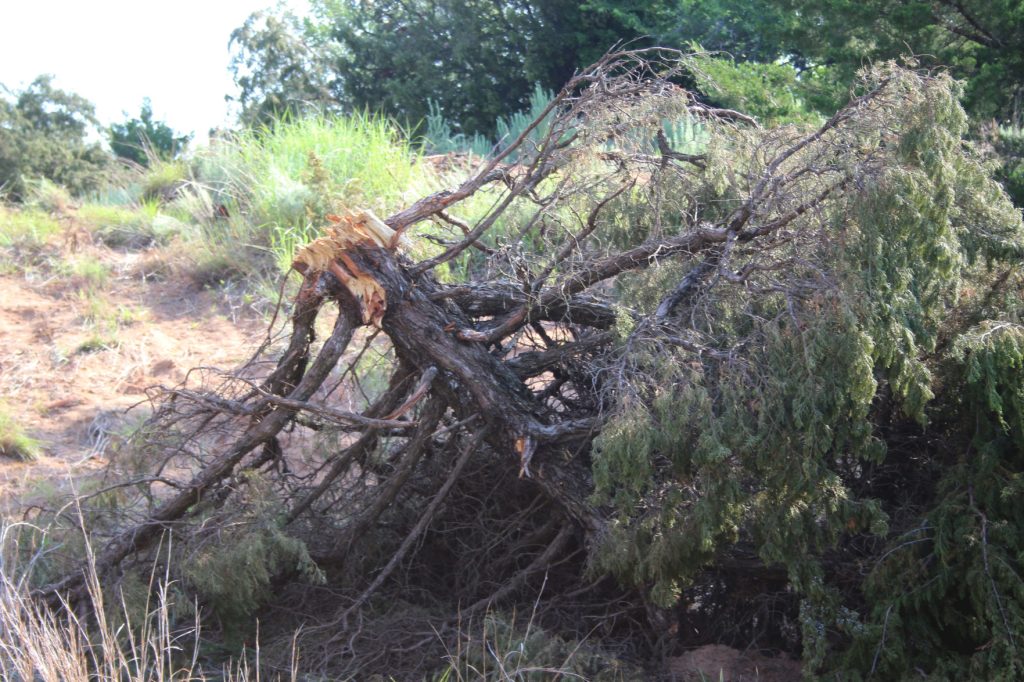
The cedar tree is an important habitat for certain animals. Russell says endangered species such as the black-capped vireo and golden-cheeked warbler thrive on the cedar tree as part of their natural habitat. The bottom line is cedar trees can be good for an ecosystem as long as they don’t displace entire species of wildlife, or decrease plant diversity within a pasture. However, the bad far outweighs the good when it comes to cedar trees.
Although cedars are a habitat for some species of birds, the growing populations of the trees hamper many animals. The greater prairie-chicken, for example, prefers wide-open rangelands, but with the over growth of cedar tree populations, the prairie chicken finds it harder and harder to find a natural habitat, which has slowly eaten away at the chicken’s numbers. Another bird in the same boat is the northern bobwhite quail, which has also lost much of its natural habitat to the cedar tree’s dense forests. Some OSU studies have shown Oklahoma is losing 5,000 of this species of quail every year on account of too many eastern redcedar.
Unfortunately, the American burying beetle is on the endangered species list, partly due to loss of habitat in areas where cedar trees have overgrown. This beetle prefers grasslands, scrublands and forest edges. This important scavenger of decaying matter is a much-needed insect for the ecosystem, but it continues to be pushed out of its favorite environment.
“Every species out there has positives for some animals and negatives for others,” Hallgren said. “So if you’ve got eastern redcedar you’re going to have all the animals that like it and none of the animals that don’t.”
Hallgren says water usage is also a problem. An OSU research study showed 1 acre of cedars absorbs 55,000 gallons of water per year. It was also reported one cedar tree could use up to 30 gallons of water a day. If cedars are in a densely populated area, branches and foliage can actually catch snow and rainfall where it evaporates before it can each reach the soil. Especially during a drought, that water is essential to the survival of pastures, livestock and wildlife.
Cedar trees are also a major spreader of tree pollen, which leaves many people miserable when allergy season rolls around each year. But perhaps the scariest characteristic of cedar trees is their potential to add explosive fuel to wildfires. Hallgren says when a drought is severe cedar trees become a great fire risk because of their oils.
“I think we are going to be fighting a lot of wildfires toward the end of the summer and when you have cedar trees in your pasture, that’s basically like a tender box waiting to ignite,” Russell explained. “It’s not uncommon for fuel moisture for blueberry and redberry junipers to be in single digits during the summer and that is a very, very volatile fuel source. If you don’t manage your pastures and rangelands for cedar, then Mother Nature is going to do it for you and she usually does it in the form of a wildfire.”
Battle tactics
Making the decision to remove cedar trees can be a significant financial step. Not only could it lower the chances of a devastating wildfire, it could also add on acres of grass to a pasture. According to the Natural Resources Conservation Service, Nebraska is losing 2 percent of its grazing land a year to cedar trees. Russell said she believed Texas was probably losing even more on a yearly basis. Taking back that land is crucial to the future of wildlife reserves and livestock grazing operations.
Luckily for landowners, the Environmental Quality Incentives Program can provide funding and other assistance for tasks such as removing invasive tree species through the assistance of the NRCS.
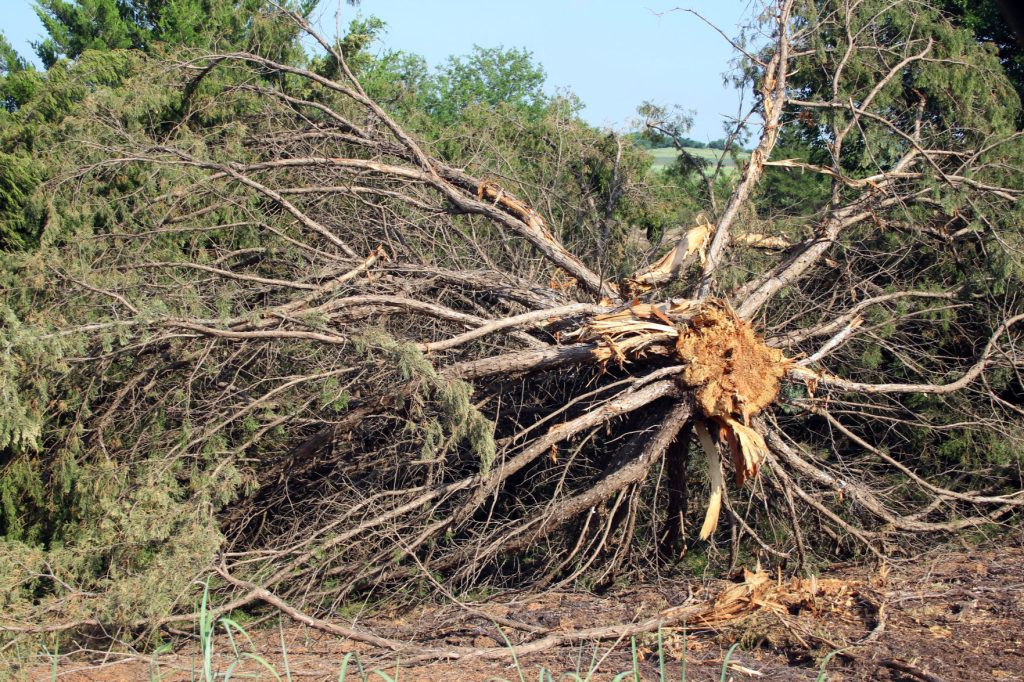
“The most frustrating thing about cedar is it can be managed easily, it’s just that a lot of folks choose not to and before long it’s too late and you’ve lost that pasture to a closed canopy of cedar,” Russell said. “At that point you’re looking at much more of a reclamation type of management rather than just maintenance.”
Sign up for HPJ Insights
Our weekly newsletter delivers the latest news straight to your inbox including breaking news, our exclusive columns and much more.
Three management techniques are used to maintain tree populations: fire, mechanical and chemicals. Prescribed burns are the most recommended, as well as least expensive means of removal, however only certain situations call for fire. Trees smaller than 6 feet can be successfully burned. Hallgren says it takes 10 years for a tree to get over 6 feet tall and recommends pastures be burned once every 10 years, or twice a decade if possible. Non-resprouting cedar trees can be killed with fire once the green foliage from the top to the bottom of the tree is burnt.
“It’s less labor intensive and you can get a final product much faster than you would with any other type of management,” Russell said. “It’s a natural reoccurring process that’s been redefining our native communities for thousands of years.”
Although burning is the most ecologically sound way to get rid of cedar trees, it has its disadvantages. The environment has to be just right for a successful burn. The temperature, wind speed, humidity and amount of grass need to be within the levels to burn safely and effectively. Also, with a prescribed burn landowners can’t be selective of which trees stay and or go.
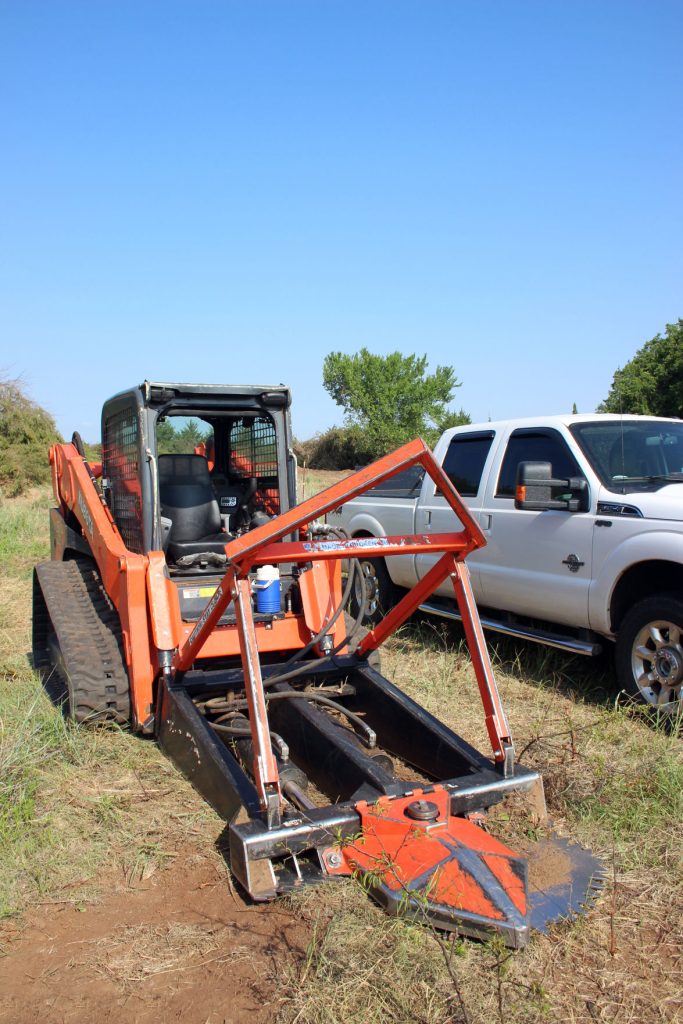
For young trees, grubbing pastures can be an effective and safe alternative to stopping cedar trees before they begin to take hold of rangelands. Specialized equipment can be used to remove large trees from landscapes and prevent future trees from developing. Aside from redberry juniper, as long as the tree is cut below the lowest branch, the tree will not re-sprout. One technique a landowner can use to keep trees from coming back so quickly but not getting rid of them entirely is to only cut down the female trees, as they produce the seeds and berries. Seeds are a food source for many birds, but birds also spread seeds where they grow into more trees.
“Seeds are a huge wildlife resource in terms of food, but we definitely have to continue to manage for them because those seeds can live up to 18 years and still be viable,” Russell said.
Chemical means of removal are the least used method to kill mature cedar trees because it is one of the most expensive techniques. Also, landowners have to be careful not to spray trees too close to water sources or other areas that could be unintentionally harmed by the chemicals.
“Not only is it expensive, you also have to wait for the chemical to work, and that usually takes up to two years,” Russell explained. “Herbicides may require lots of retreatment follow-up because some species will resprout from the base.”
Landowners have an obligation to take care of their property and in turn the land often takes care of them. Cedar tree infestations could mean the end for some species of wildlife, vegetation that desperately needs precipitation and sunlight and livestock, which rely on that vegetation. Cutting a cedar tree population down to size could be the difference in the land taking care of the landowner or not.
“It’s important for landowners to realize how quickly a native species can become an invasive species and how quickly it can take over your pasture,” Russell said. “If you do let it take over your pasture completely in 100 percent closed canopy density you’re going to really have to invest a lot more money and time to get that pasture back to where it should in terms of productivity and sustainability. Doing nothing is the worst thing you can possibly do regardless of your land objective or your management strategy.”
Lacey Vilhauer can be reached at 620-227-1871 or [email protected].
